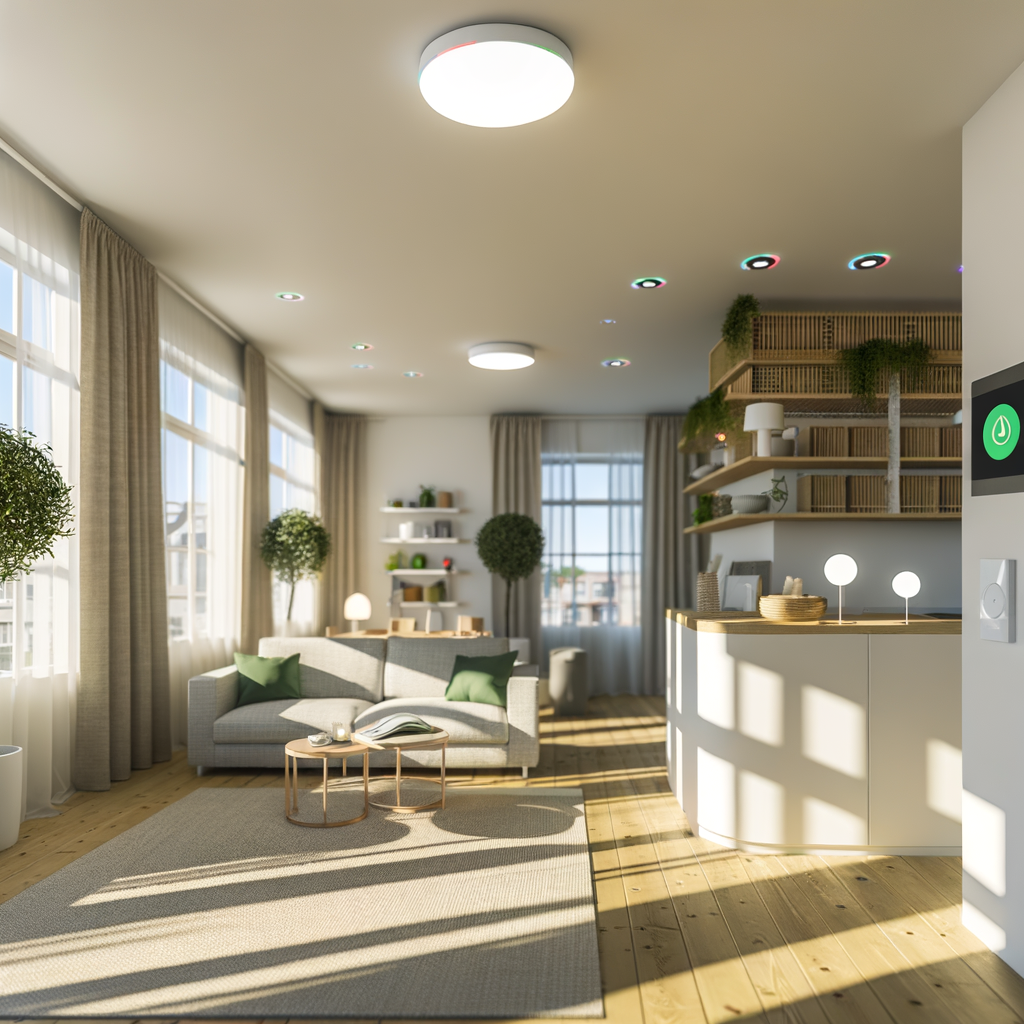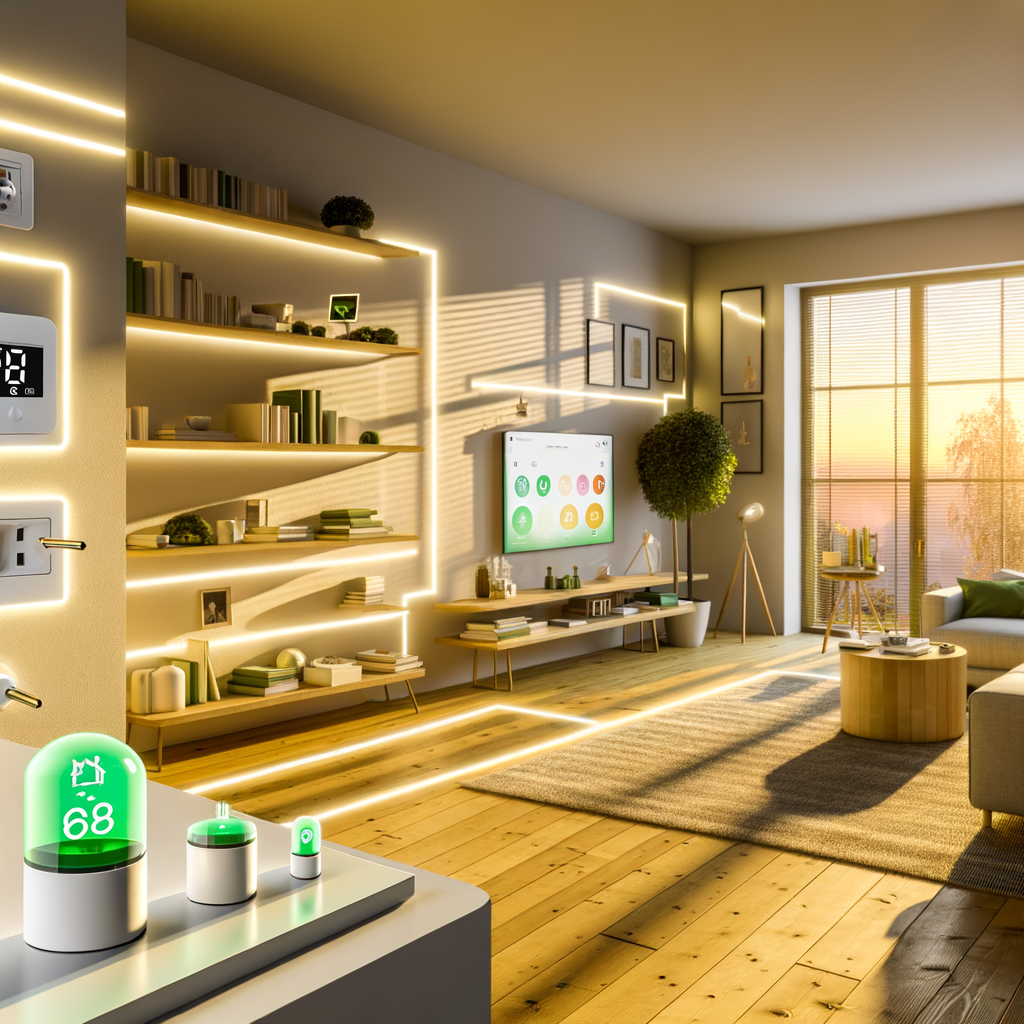Busting the Top 7 Smart Home Myths That Hold Renters Back from Living Sustainably
Smart home technology is no longer the stuff of futuristic movies—it’s here, it’s affordable, and it’s changing the way we live. But for renters, there are a lot of myths and misconceptions that keep them from embracing smart home solutions, especially when it comes to sustainable living.
Let’s debunk the 7 most common smart home myths holding renters back, and discover how you can make your apartment greener, cheaper, and more convenient—without risking your security deposit.
Myth #1: “Smart Home Devices Require Permanent Installation”
This myth probably stops more renters than any other. Many people think you have to drill holes, re-wire your apartment, or make other permanent changes to install smart devices. For those who don’t own their living space, that’s a non-starter.
Reality: Most Smart Devices Are Plug-and-Play
- Smart plugs simply plug into existing outlets—no tools required.
- Smart bulbs screw into standard light sockets.
- Smart speakers, displays, and hubs just need a power outlet and a Wi-Fi connection.
- Adhesive mounts for cameras or sensors can be removed with zero wall damage.
Tip: Before you buy, check product details for “no hardwiring required” or “tool-free installation.” Most modern smart home devices are designed for easy setup—perfect for renters.
Turn This Into Sustainable Action
- Use smart plugs to automatically shut off energy-draining devices when you leave home.
- Set up smart light schedules and dimming features to save electricity.
Myth #2: “You Need Your Landlord’s Permission for Everything”
Worried about violating your lease or risking your deposit if you add a smart home device? You’re not alone. While it’s true you should always review your lease and talk to your landlord before making big changes, most smart home upgrades don’t require permission.
Reality: Most Smart Upgrades Leave No Trace
- Replaceable devices (like bulbs, plugs, hubs) can all be unplugged and taken with you at move-out.
- Many smart sensors use removable adhesive strips, leaving no marks.
- Temporary smart home security kits are designed for renters and require no drilling.
Actionable Advice
- Non-permanent is the key: If it can be removed easily, it’s usually allowed.
- Document your setup: Snap before-and-after pictures to prove you haven’t damaged anything.
- When in doubt, ask: If you plan to swap out thermostats or lock hardware, get landlord permission first. But for most smart devices, you’re in the clear.
Myth #3: “Smart Home Tech Is Too Expensive”
A lot of renters think that smart home tech is a luxury only for home owners with big budgets. That’s simply not true anymore.
Reality: Prices Have Dropped Dramatically
- A smart plug can cost under $15.
- You can buy a smart light bulb for under $10.
- Entry-level voice assistants start below $30—sometimes less during sales!
- Starter energy-saving kits (including multiple items) are available for under $100.
Bonus: Many utility companies and local governments offer rebates or discounts for smart thermostats and energy-saving products.
How to Maximize Every Dollar
- Start with one device: Try a smart plug or smart bulb to see real savings on your energy bill before expanding.
- Look for deals: Check for sales events (Black Friday, Prime Day) or open-box offers.
- Prioritize sustainability: Invest in products that help cut your electricity and heating/cooling costs—these often pay for themselves in one year or less.
Myth #4: “Smart Home Tech Doesn’t Really Save Energy”
There’s a common misconception that smart home tech is just a convenience and doesn’t actually help the planet. In reality, some of the biggest energy wasters in rental units can be tackled with smart upgrades.
Reality: Smart Tech Can Dramatically Cut Wasted Energy
- Smart thermostats save up to 10-12% on heating and 15% on cooling (source).
- Smart bulbs and plugs help eliminate “phantom” or standby power draw.
- Scheduling features automatically turn off lights, fans, and electronics when not in use.
- App monitoring lets you track your real-time energy use and make adjustments fast.
Ways Renters Can Boost Sustainability
- Set up scenes: Create “Leaving Home” and “Bedtime” routines that switch off all non-essential devices at once.
- Monitor devices: Use power reports and reminders to find out where you waste energy most.
Myth #5: “Smart Home Systems Are Too Complicated to Set Up”
Many renters fear the tech learning curve—worrying that smart home devices are confusing, glitchy, or require a computer science degree to install.
Reality: Most Devices Take 5 Minutes or Less
- Smart plugs and bulbs often work instantly with a scan of a QR code and a couple taps in an app.
- Voice assistants walk you through every step.
- Manufacturers make their apps user-friendly, with step-by-step video tutorials.
- No need for a “home hub” or special wiring for most entry-level devices.
Action Steps for Renters
- Start with one easy device, like a smart plug or light bulb.
- Follow the app’s onboarding guide for automatic configuration and Wi-Fi setup.
- Check YouTube or the manufacturer’s support for help—there’s a tutorial for everything.
Tip: Most renters find the tech so easy, they’re hooked in minutes and start expanding room by room.
Myth #6: “Smart Devices Will Leave Personal Data Exposed”
Privacy is a real concern, especially for renters sharing Wi-Fi networks or worried about who can access their devices after they move out. But smart device makers have made big strides in user data security.
Reality: Modern Smart Devices Are Built with Security in Mind
- Most reputable brands use end-to-end encryption, 2-factor authentication, and regular security updates.
- Devices can be reset with a tap—just factory reset before moving out. Your accounts and data stay secure.
- Account-based setup: Devices are tied to your personal account, not to your apartment.
How Renters Can Stay Safe
- Set up your own Wi-Fi network if possible (or a secure guest network for your devices).
- Use unique passwords and enable all available security features.
- Turn off voice recording or disable remote access features you don’t use.
- Always factory reset your devices before moving—you’ll erase any stored data or settings.
Myth #7: “Smart Tech Isn’t Worth It for Short-Term Renters”
Why




